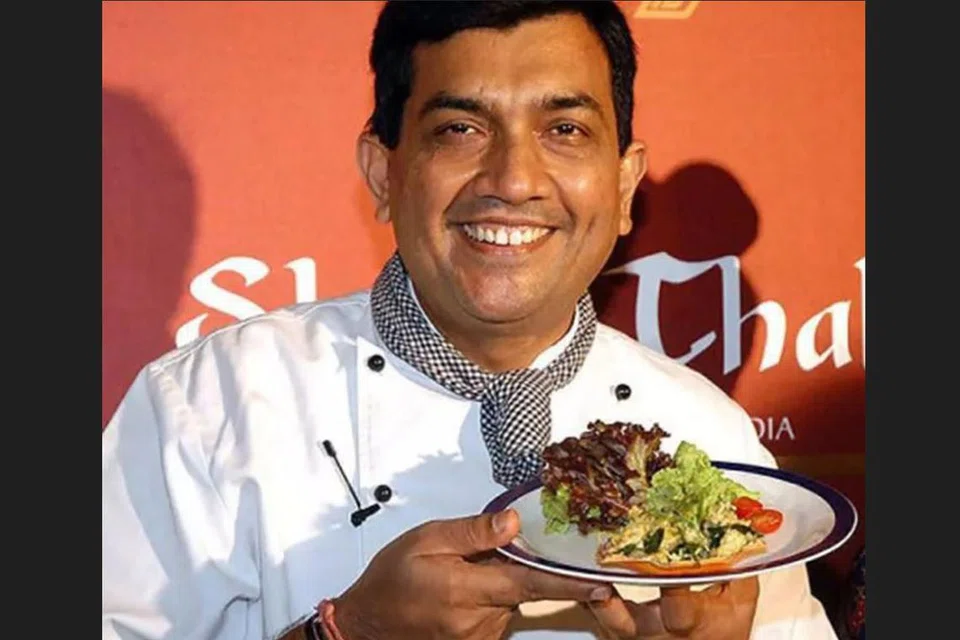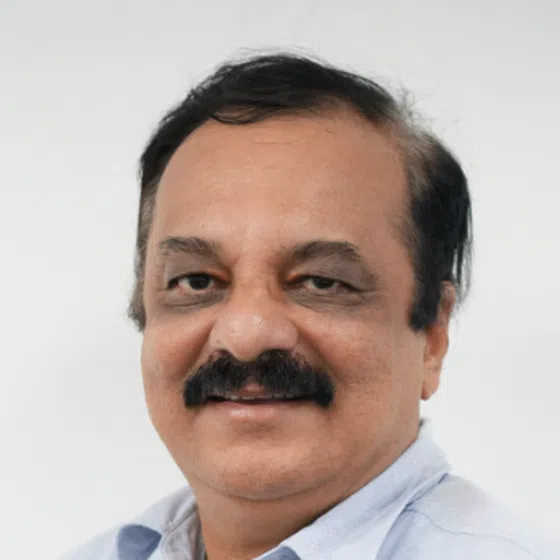Top Indian chef Sanjeev Kapoor (right) brings diversity and unforgettable taste to the table up in the skies, on Singapore Airlines long haul flights.
“The menu has to pass the taste test,” said Kapoor.
“The dishes are taken into a simulated pressurised cabin, and hours are spent sampling and adjusting the flavours, so the food can taste its best at 35,000 feet.”
Kapoor, 60, is a member of SIA’s International Culinary Panel, a talented pool that comprises five globally acclaimed chefs.
The others are Georges Blanc (France), Matt Moran (Australia), Yoshihiro Murata (Japan) and Zhu Jun (China).
Kapoor has been tasked with providing a wholesome meal with a comforting Indian touch. Passengers can choose from vegetarian and non-vegetarian delicacies.
And, if they are travelling in First Class or Business Class, they get to taste Kapoor’s signature Shahi Thali and Ruchi Thali respectively.
Available in vegetarian and non-vegetarian options, each thali is a culinary journey from India’s north to south, presenting regional flavours in their truest form.
Kapoor was recently in Singapore as the brand ambassador for The Akshaya Patra Foundation – a not-for-profit organisation headquartered in Bengaluru that strives to eliminate classroom hunger by providing nutritious meals to children studying in government schools and government-aided schools.
He told tabla! that he considers “multiple things” before curating SIA’s in-flight food experience.
“The philosophy centres on dishes that transmit freshness,” he said. “Over time, we have understood what works and what doesn’t. For instance, slow-cooked dishes with flavours that are not understated work well.
“The air is drier in the cabin, and you need water for dispersion of flavour. You even salivate less on a flight. So, we have to compensate for the lack of water. Also, the food is cooked in the kitchen and chilled – to be reheated on the flight. So it can never be overcooked in the kitchen.
“Gravies are good as they inherently have moisture that prevents the food from drying up. Indian food is lucky that way. Food items that change form with freezing and reheating, or those that need very high temperatures to reheat, cannot be used.”
Most ingredients tend to become dry, rubbery, limp or change colour when they are reheated. For instance, leafy greens like spinach won’t retain their bright green colour, prawns might get chewy and deep-fried food like potato chips will not remain crisp.
“So, the food will have to be seasoned more than usual in order to heighten flavours and aromas, which will compensate for the 30 per cent reduction in taste sensations,” said Kapoor. “But you also need to take into account that you are serving different kinds of flavours in an enclosed space. This means you would not, ideally, want the cabin to overwhelmingly smell of any particular food item.”
The chef, the only one in India to have his own channel – FoodFood, also designs the menus keeping in mind flight routes and timings.
“Singapore Airlines conducted research some years ago in the Indian cities to which it operates to find out what fliers prefer to eat,” he said. “We learnt that when people are going away from their homes – on a holiday or business trip – they prefer more elaborate meals that are reminiscent of restaurant food. However, when they are returning home, they prefer home-style cooking.”
With this piece of information, Kapoor designed the Shahi Thali which is part of SIA’s First Class dining on Indian routes.
Typically it will have items such as coconut-ginger pancake with lemongrass infused prawn, mango chaat with tomato olive and coriander chutney, murgh tulsi malai, til wala pulao, chicken in basil cream, Rajasthani lamb with chilli, spinach with fenugreek, black pepper lentil soup, kachumber salad, yogurt and white pumpkin rice pudding with milk and stewed fruits.
Often, he relies on feedback and booking requests to understand what passengers want to eat.
“Passengers, especially on long-haul flights, often fill in their dietary preferences while booking their flights. This makes it easier for me to decide on the dishes we plan to serve on a specific flight,” said Kapoor. “Flight routes and timings also decide what meal – breakfast, lunch, dinner or snack – is served. Our menu is also selected to meet the needs of passengers who may be travelling through multiple time zones.”
Kapoor pointed out that it is not easy serving Indian dishes on flights.
“For airlines, weight is everything,” he said. “We even had to do research on the clay pot in which the curd is served so that it does not add significantly to the total weight of the dish.
“Crockery has to look good but it cannot weigh a lot. There is also very little space for the crew to stand and do their duties. So, if there are many steps involved in serving, it will be frustrating for them, and the flyers will get impatient as it will take more time.”
Training catering and cabin crew members in presentation is equally important.
“Photographs of each dish are given to staff members so that they know exactly how the food should look and how it is to be served,” said Kapoor. “We also have to keep in mind that there are limitations when it comes to the use of cutlery and space, both while serving and eating.”
On SIA flights, the Indian cuisine is available in Business Class, First Class and Economy Class.
“Over a period of time, I think the quality of the Economy Class food has improved,” said Kapoor. “There is also more to eat – as we change the menu almost every three to six months.
“The airline also pays a lot of attention to the profile of the traveller. A lot of people transit in Singapore on their way to India from Australia, United States and other places. So, we are catering to a very typical Indian traveller going home.


